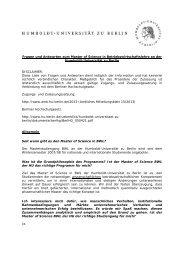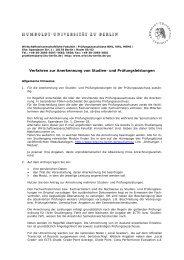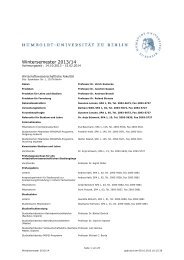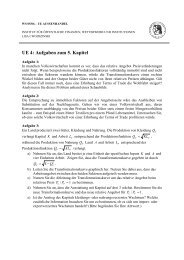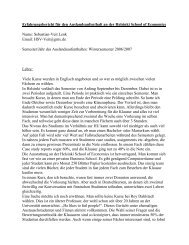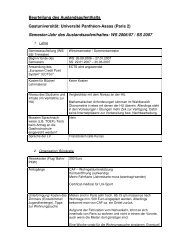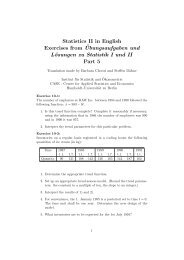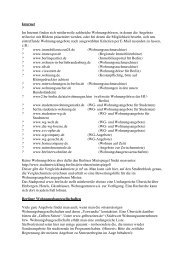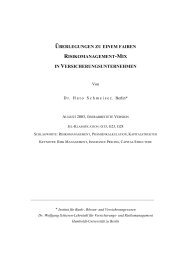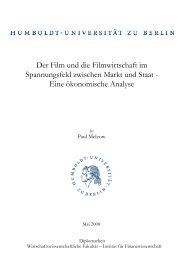Master Thesis - Humboldt-Universität zu Berlin
Master Thesis - Humboldt-Universität zu Berlin
Master Thesis - Humboldt-Universität zu Berlin
You also want an ePaper? Increase the reach of your titles
YUMPU automatically turns print PDFs into web optimized ePapers that Google loves.
The effective returns on domestic and foreign bonds are affected by a risk<br />
premium on bold holdings represented by AR(1) shock ɛ b t = ρ b ɛ b t−1 + ηt, b with<br />
ηt b an i.i.d. - Normal error term. Foreign interest rate is in addition affected<br />
by a risk premium on foreign bond holdings shock, ɛ t following a similar<br />
AR(1) process to ɛ S t .<br />
Current income and financial wealth can be used for consumption and investment<br />
in physical capital. Real consumption Ct τ corresponds to a real<br />
expenditure of (1 + τt c )Ct τ , whereby τt c , an exogeneous variable is designated<br />
as a tax based on consumption, with τt<br />
c = ɛ c t = τ c + ρ c ɛ c t−1 + ηt c , with ηt c an<br />
i.i.d. - Normal error term. Capital formation is described by equation (6),<br />
where we assume the adjustment cost function of changes in investment to<br />
have the following features: S(1) = 0, S ′ (1) = 0, and S ′′ (1) = 1/ϕ represents<br />
the adjustment costs.<br />
4.1.2 Labor market:<br />
K t = K t−1 (1 − δ) + (1 − S<br />
( ) ɛ<br />
I<br />
t I t<br />
)I t (6)<br />
I t−1<br />
The labour supply and wage-setting processes are modelled as in Smets and<br />
Wouters (2003). The elasticity of demand for individual labor supply is assumed<br />
to be constant.<br />
Households are wage-setters in the labour market<br />
and, following Calvo (1983), they can set their wage optimaly with probability<br />
1 − ξ w . With the complementary probability, their wage is indexed to<br />
both past inflation in the consumption price and trend inflation with respective<br />
shares γ w and 1 − γ w . Thus, households choose nominal wage in order to<br />
maximise their intertemporal objective function subject to the intertemporal<br />
budget constraint and to the following labour demand:<br />
l τ t =<br />
( W<br />
τ<br />
t<br />
W t<br />
) −(1+λw)/λ w<br />
L t (7)<br />
11




